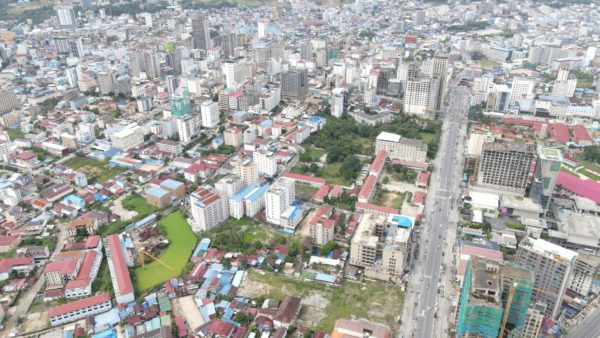Canada and China have teamed up to build an "eco-district" using Canadian timber in the Chinese city of Tianjin in an attempt to introduce greener building techniques and materials to China.
Canadian timber exports to China have soared in recent years, from just C$104m in 2004 to $1.9bn in 2013, meaning Canada has replaced Russia as China’s biggest softwood supplier.
The 2 sq km "Low-Carbon Eco-District Demonstration Project" in Tianjin’s Binhai New Area is intended to be an example of green building that other Chinese cities could follow, newspaper China Daily said.
In 2013, China’s state council issued a requirement that, by 2020, 50% of new buildings should meet the standards of green housing, with the standards themselves expected in 2015.
China has scarce forest resources, but it has identified timber as a potential green building material.
Canada’s wood can and should play a significant role in China’s green building goals– Greg Rickford, Canada’s minister for natural resources
"Though Chinese people have a long tradition of wood building, for instance the Forbidden City, the scarce forest resources and large need of housing have made it impossible to develop wood housing and technology in the past decades," said Chen Rong, an official with China’s ministry of Housing and Urban-Rural Development.
"Now we welcome that Canada can provide high-quality wood products and green construction technologies," he added.
The memorandum of understanding was signed by Canadian and Chinese government officials on September 4 at the Canadian embassy in Beijing.
"Canada sees the tremendous demand for green-building materials and technologies for China’s urbanization," said Greg Rickford, Canada’s minister for natural resources. "Canada’s wood can and should play a significant role in China’s green building goals."
Under the agreement other industries in Canada will have opportunities to provide wood, as well as green-building solutions and technologies in the district.
According to Canada’s ministry of natural resources 40% of the world’s certified forests grow in Canada, where 153 million hectares are certified by one or more of three globally recognized certification systems as being sustainably managed.
Less than half a per cent of Canada’s forests are harvested annually to manufacture products for the domestic and international markets.
The Tianjin eco-district is being organised by a joint Chinese-Canadian organisation called Canada Wood.
"There are misconceptions of using wood in construction in the concerns such as durability and security," Fred Spoke, managing director of Canada Wood in China, told China Daily.
"With the right construction technology, wood frames in construction have great performances in reducing carbon emission and resisting earthquake," he added.
Canada Wood has already collaborated with developers and local governments to use Canadian timber in building resorts, schools and care centres, Canada Wood said.
Photograph: Not for cutting: Wells Gray Provincial Park, British Columbia (Jason Hollinger/Wikimedia Commons)










